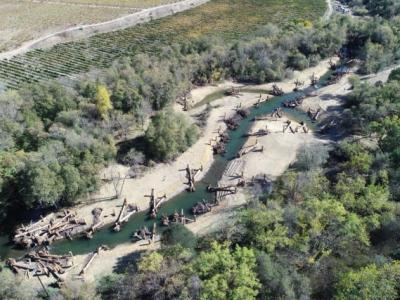New Approaches to Investigate Salmon-Habitat Relationships in Hydrologically Altered River Basins
Session Coordinator:
Eli Asarian, Riverbend Sciences
This session will feature a range of novel approaches for investigating salmon-habitat relationships in hydrologically altered river basins, including the Eel, Noyo, Trinity, Klamath, San Joaquin, Sacramento, Stanislaus, Tuolumne, and Lagunitas. Approaches include new genetic technologies, modeling software, metrics, and restoration techniques.
Every Fish that Dies Gets Eaten
JD Wikert, U.S. Fish and Wildlife Service
A New Metric for Measuring Downstream Effects of Dams on Floodplain Inundation
Alison Willy, U.S. Fish and Wildlife Service
Using Genetics to Investigate the Ecology and Distribution of Summer Steelhead in the Eel River Basin
Samantha Kannry, University of California Davis, Ecology Graduate Group.
Predicting Salmonid Spawning Habitat Using Geospatially Constructed Stream Morphology Derived from High resolution LiDAR-derived DEMs and Field Survey Data in the Indian Creek Watershed, Mendocino County, CA
Justin Bissell, Pacific Watershed Associates
Modeling Flows in Northwest California Watersheds with VELMA-2.0
Melissa Collin and Sean Fleming, Humboldt State University
Reach Scale River Metabolism as an Indicator of Basal Food Web Resources and Water Quality in the Klamath River
Laurel Genzoli, University of Montana

